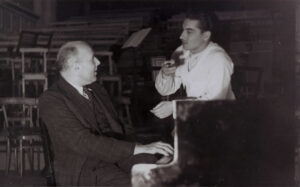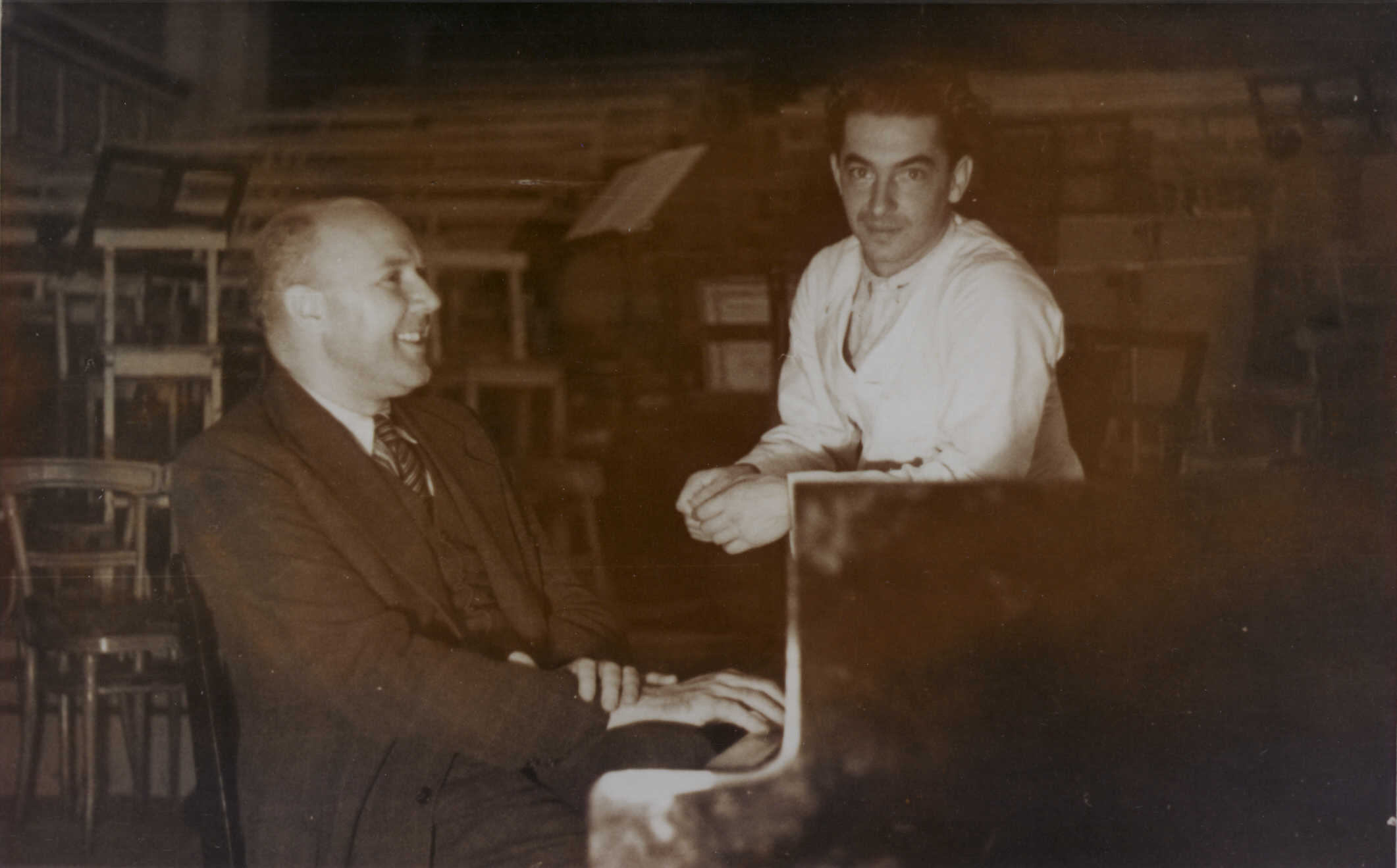05 October 2023
P.R. Jenkins
Spotlight Beethoven: The solo concertos

Karajan conducted Beethoven’s works almost a thousand times(!) in concert. Of course, he included the solo concertos although he may not have been as dedicated to them as he was to the symphonies. Beethoven was a pianist so he wrote most of the concertos (five) for “his” instrument. Apart from that, there is only one violin concerto and a “triple concerto” for piano trio and orchestra. No concertos for any wind instruments.
Beethoven’s 2nd piano concerto op 19 was in fact his first. Karajan conducted the youthful, “Mozartian” piece only once for his complete recording of the concertos with Alexis Weissenberg in the 1970s.
The 1st concerto op 15 (written after the 2nd) was recorded twice, for the Weissenberg set and also with Christoph Eschenbach in 1966. Neither of the early concertos were performed live.

Things were different with the 3rd op 37, the only one in a minor key. Karajan chose it for 19 concerts between 1936 and 1980 featuring such excellent Beethoven interpreters as Eduard Erdmann, Edwin Fischer, Hans Richter-Haaser, Jean-Bernard Pommier, Emil Gilels, Radu Lupu and Maurizio Pollini (a charity concert in December 1980, I presume it was to support the victims of the Irpinia earthquake a month before).

The live recording on 26 May 1957 is the only testimonial of a collaboration between Karajan and Glenn Gould. Gould was astonished to report that with the Berlin Philharmonic certain sequences in this concerto had worked immediately, which had never been the case with any other orchestra. The encounter with Emil Gilels in 1976 unfortunately remained the only one. Although Gilels tried to arrange a repeat, the Soviet government prohibited it. A CD with Karajan and Weissenberg performing the 3rd and the 5th Beethoven concertos, recorded live for a Japanese broadcast in 1977, was published in collaboration with our institute in 2012.
Beethoven’s lyrical 4th piano concerto was programmed by Karajan on 16 occasions. It is remarkable that he performed it as a 30-year-old with a doyen of the German piano school, Wilhelm Backhaus, in Aachen and 23 years later when he was already head of the Vienna State Opera and the Berlin Philharmonic with the same pianist (now 77 years old) in Paris. Rare encounters with Annie Fischer and Clara Haskil in the 1950s and with Vladimir Ashkenazy in 1983 featured this concerto (the concert with Haskil was recorded) and in 1954, it was in Karajan’s luggage on his first Japan tour. On two evenings he conducted it with two different Japanese pianists – Takahiro Sonoda and Yoshie Naito. There are two studio recordings, one with Gieseking and the Philharmonia in 1951, the other with Weissenberg in 1974.

Beethoven’s last and most popular concerto, the “Emperor” in E flat major, was recorded with Gieseking in the same session in London and performed in Aachen as early as 1935 (read Gieseking’s comments on the 27-year-old Karajan here). In Aachen, Karajan also conducted a marathon concert (Emperor, Mozart K 467, Liszt 1) with the bizarre pianist Elly Ney. In the 1970s, he performed the work exclusively with Alexis Weissenberg.

“The gem of the repertoire”
Anne-Sophie Mutter about Beethoven’s violin concerto
Like his successors Brahms, Tchaikovsky, Dvořák, Sibelius and Elgar, Beethoven composed only a single violin concerto. Karajan started performing it in 1935 with his splendid Aachen concertmaster Detlev Grümmer (husband of the singer Elisabeth Grümmer). Before World War II, Karajan performed it twice more with Andries Roodenburg and Hugo Kolberg in 1938. After the war, he resumed his engagement with the piece in 1948 by collaborating with the extremely gifted young violinist Ginette Neveu, who died a year later in a plane crash at the age of 30. In the 1950s, Karajan performed it with Beethoven experts like Yehudi Menuhin and Wolfgang Schneiderhan and once with the American soloist Betty-Jean Hagen. Half of all the performances (11) of this piece were with Anne-Sophie Mutter in 1980/81. With his protégé Karajan also made most of the recordings – one in the studio, four radio broadcasts and two films, one of them the special feature with the European Union Youth Orchestra rehearsing in Courchevel and performing in Salzburg in 1980. Karajan’s first studio recording was with his favourite violinist in the 1960s, Christian Ferras.

Karajan and Wolfgang Schneiderhan
The unconventional Triple Concerto op 56 is a sort of sinfonia concertante for three soloists and orchestra, comparable to the works of Haydn (Hob. I:105) and Mozart (K 297b and 364). Karajan’s first encounter with the piece was a culture-political sensation in 1969. In the middle of the cold war, he managed to produce a studio recording with the Berlin Philharmonic and an all-Soviet trio Sviatoslav Richter (piano), David Oistrakh (violin) and Mstislav Rostropovich (cello). The Gramophone wrote:
“The line-up [of soloists] is breathtaking. A marvellous performance that will clearly remain a classic for years to come.”

Nine years later, Karajan gathered a young trio with Mark Zeltser (piano), Anne-Sophie Mutter (violin) and Yo-Yo Ma (cello) for a new studio recording and a series of nine live performances over a space of sixteen months.

We’ve prepared playlists with Karajan conducting Beethoven concertos. Listen to them here.
— P.R. Jenkins











